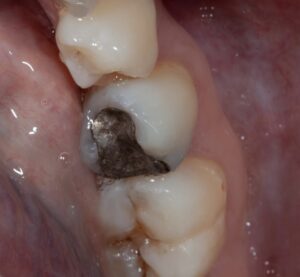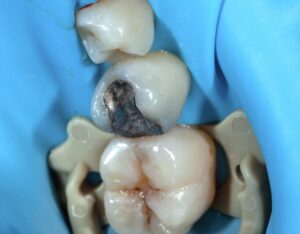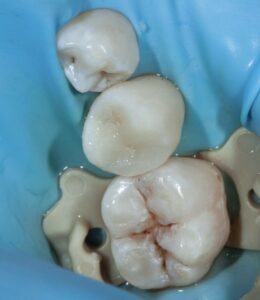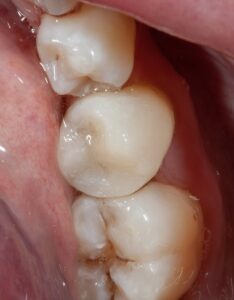May
19
If you have been considering upgrading your amalgam fillings to tooth-coloured composite restorations, this blog can help you decide what to do!
Visit www.smilecliniq.com for more information or to book a consultation!
What is Amalgam?
Dental amalgam is a liquid mercury and metal alloy mixture. It has been used for over 150 years in dentistry to restore decayed teeth. In order for amalgam to be retained within a tooth, an undercut needs to be created to ‘pack’ the material inside. This essentially means the placement of an amalgam restoration can be quite destructive of the remaining tooth tissue over time.


Is it Safe to Leave my Amalgam Fillings in Place?
Due to concerns about the release of mercury vapour into the environment, there has been a general phasing out of amalgam over the past few years. In some countries the material is banned altogether.
As a dental material, it can often last for many years and has been an inexpensive and easy way of stabilising tooth decay. However, what we are now seeing very frequently is the fracture of teeth with old amalgam fillings in. This is due to the destructive preparation required to place the material and over time there is a large amount of stress placed in the surrounding enamel.
If there are crack-lines in the enamel around your metal restorations, your dentist may recommend removal of the amalgam to reduce the risk of ‘catastrophic failure’ of the tooth. This is when the tooth breaks in a way that it cannot be restored, and often starts with cracks in the enamel.
What are the Alternatives to Amalgam Fillings?
Modern techniques allow dentists to place restorations that will adhesively bond to your remaining tooth structure. This means that more precious enamel is spared and the tooth is effectively held together much better in comparison to amalgam.
If there is still a fair amount of health tooth tissue left, your dentist is likely to recommend upgrading the amalgam filling to a composite restoration. Composite is a resin based polymer with similar properties to natural tooth tissue. A strong bond between composite and enamel can be made and the aesthetics can be fantastic!
Sometimes using composite isn’t enough to provide lasting strength to a tooth. If there has already been heavy damage, it is recommended to place a laboratory made restoration, based off a scan or impression of the broken tooth. There are fantastic strong and aesthetic materials, such as porcelain or zirconia, that can be bonded to your tooth to restore function and aesthetics.


How are Amalgam Fillings Removed?
The procedure is usually done under local anaesthetic and the amalgam will need to be gently drilled out. To help minimise the release of mercury vapour, your dentist can apply a rubber dam around the tooth or teeth being treated. This isolates the teeth and allows for any water and spray to go straight up the suction.
Once the amalgam has been removed, any decay and fraying tooth tissue will also need to be cleared before restoring. It is important to understand that the nerves in the centre of the tooth can die regardless of restoring the tooth structure. If this happens, the tooth would require root canal treatment or extraction.










